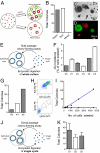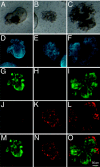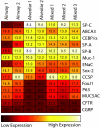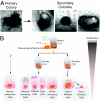Evidence of an epithelial stem/progenitor cell hierarchy in the adult mouse lung
- PMID: 20080639
- PMCID: PMC2824384
- DOI: 10.1073/pnas.0909207107
Evidence of an epithelial stem/progenitor cell hierarchy in the adult mouse lung
Abstract
The role of lung epithelial stem cells in maintenance and repair of the adult lung is ill-defined, and their identity remains contentious because of the lack of definitive markers for their prospective isolation and the absence of clonogenic assays able to measure their stem/progenitor cell potential. In this study, we show that replication of epithelial-mesenchymal interactions in a previously undescribed matrigel-based clonogenic assay enables the identification of lung epithelial stem/progenitor cells by their colony-forming potential in vitro. We describe a population of EpCAM(hi) CD49f(pos) CD104(pos) CD24(low) epithelial cfus that generate colonies comprising airway, alveolar, or mixed lung epithelial cell lineages when cocultured with EpCAM(neg) Sca-1(pos) lung mesenchymal cells. We show that soluble fibroblast growth factor-10 and hepatocyte growth factor partially replace the requirement for mesenchymal support of epithelial colony formation, allowing clonal passaging and demonstration of their capacity for self-renewal. These data support a model in which the adult mouse lung contains a minor population of multipotent epithelial stem/progenitor cells with the capacity for self-renewal and whose descendants give rise to airway and alveolar epithelial cell lineages in vitro.
Conflict of interest statement
The authors declare no conflict of interest.
Figures






References
-
- Rawlins EL, Hogan BL. Epithelial stem cells of the lung: Privileged few or opportunities for many? Development. 2006;133:2455–2465. - PubMed
Publication types
MeSH terms
Substances
LinkOut - more resources
Full Text Sources
Other Literature Sources
Medical
Molecular Biology Databases
Research Materials
Miscellaneous

